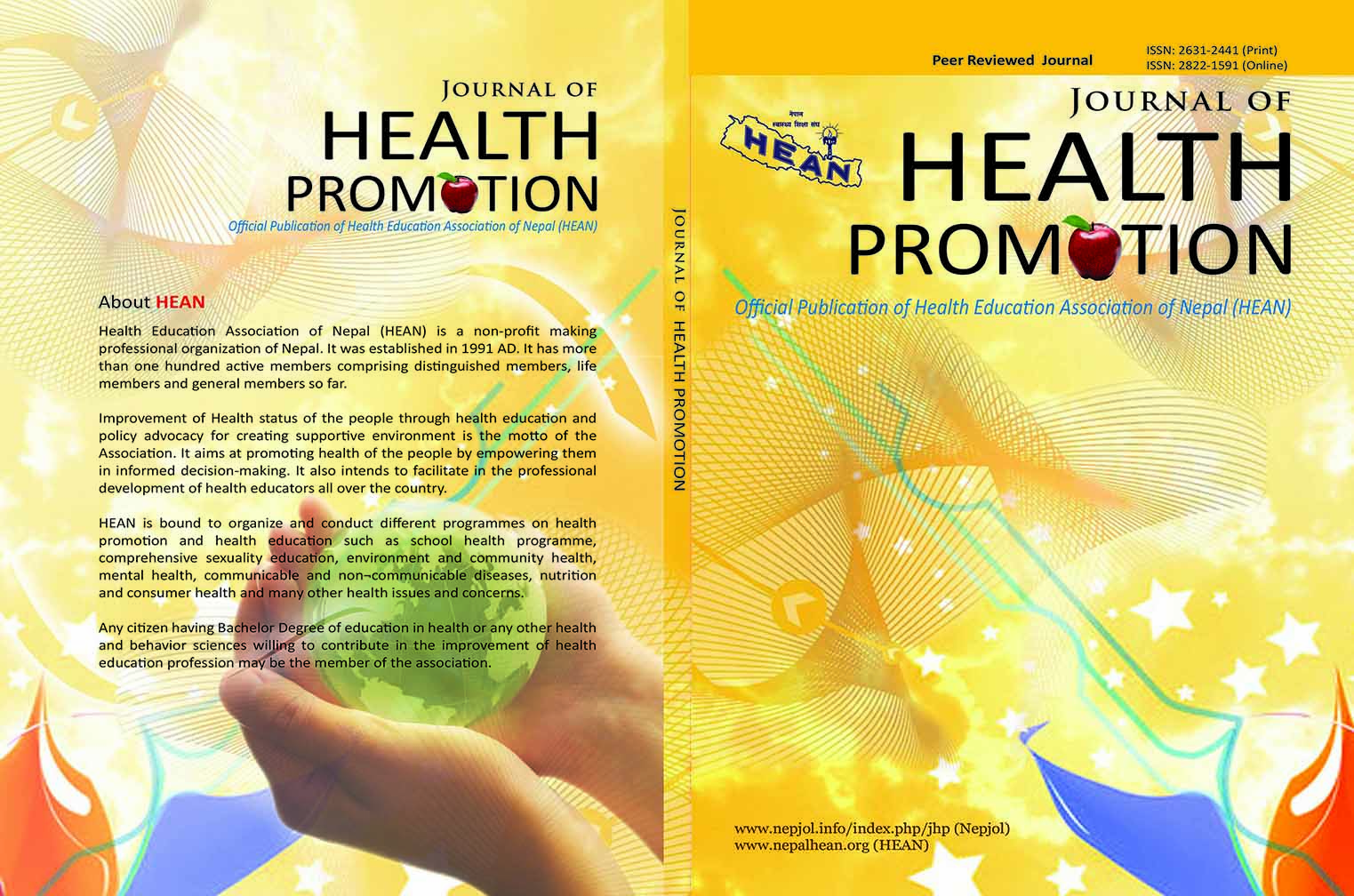Perceptions and Practices Regarding Sexual Activities among Girl Students
DOI:
https://doi.org/10.3126/jhp.v6i0.21809Keywords:
dating, masturbation, perception, sexual desire, unusual sexAbstract
This study attempts to reflect the perception of higher secondary level girl students towards various sexual activities. Since it is the peak point of sexual desire, they are more probable to involve in various sexual activities. The study is based on primary data, mainly focuses to dig-out the perception and practices of various sexual activities among higher secondary level girls students in Pokhara. There are 61 public and 47 private higher secondary schools in Kaski district. Out of them, 17 public higher secondary schools have education stream which is the universe population of the study. In selecting these schools as the source of study population, purposive sampling method is used. Here, eight public higher secondary schools are selected by simple random sampling method and 12 unmarried girl students are selected from each school on random basis. Altogether 96 students are considered as the respondents for the study and the questionnaire method is chosen as the tool to track-out their sexual activities. As per their responses, masturbation, premarital sex etc are found as the sexual practices. Masturbation is found to be more common in girls. In most cases, masturbation, mutual sharing of sexual knowledge and teasing and poking related to sex, observatory practice of porn films and habit of reading sex related literatures are found more common in them. In addition, parents’ educational background and occupations have a lot to do with their view towards various sexual activities.
Journal of Health Promotion Vol.6 2008, p.86-91
Downloads
Downloads
Published
How to Cite
Issue
Section
License
© Health Education Association of Nepal (HEAN)
Authors are required to transfer their copyright to the Health Education Association of Nepal (HEAN).
The materials of this publication may be reproduced, reviewed and translated, acknowledging the source "Journal of Health Promotion".




